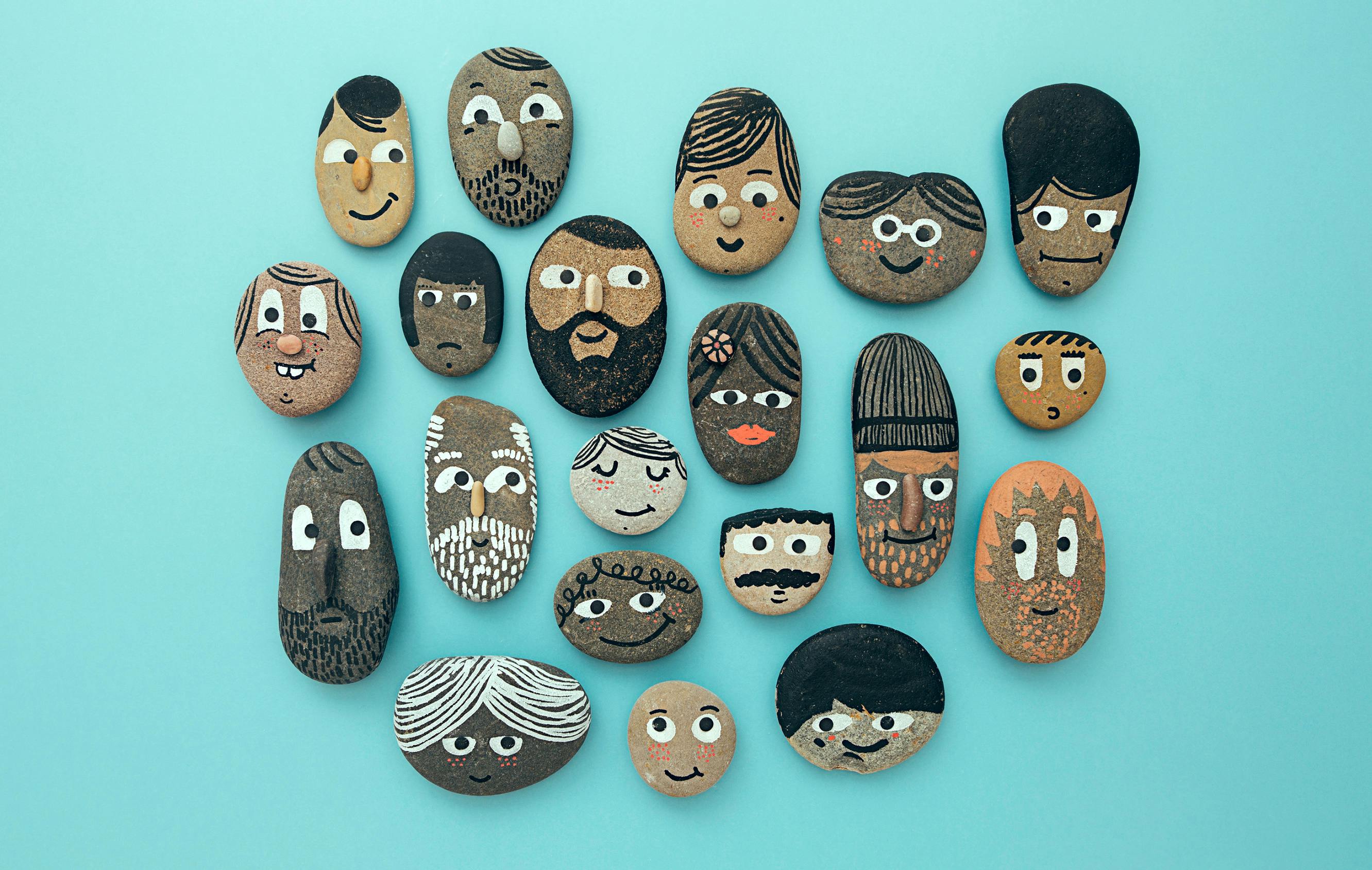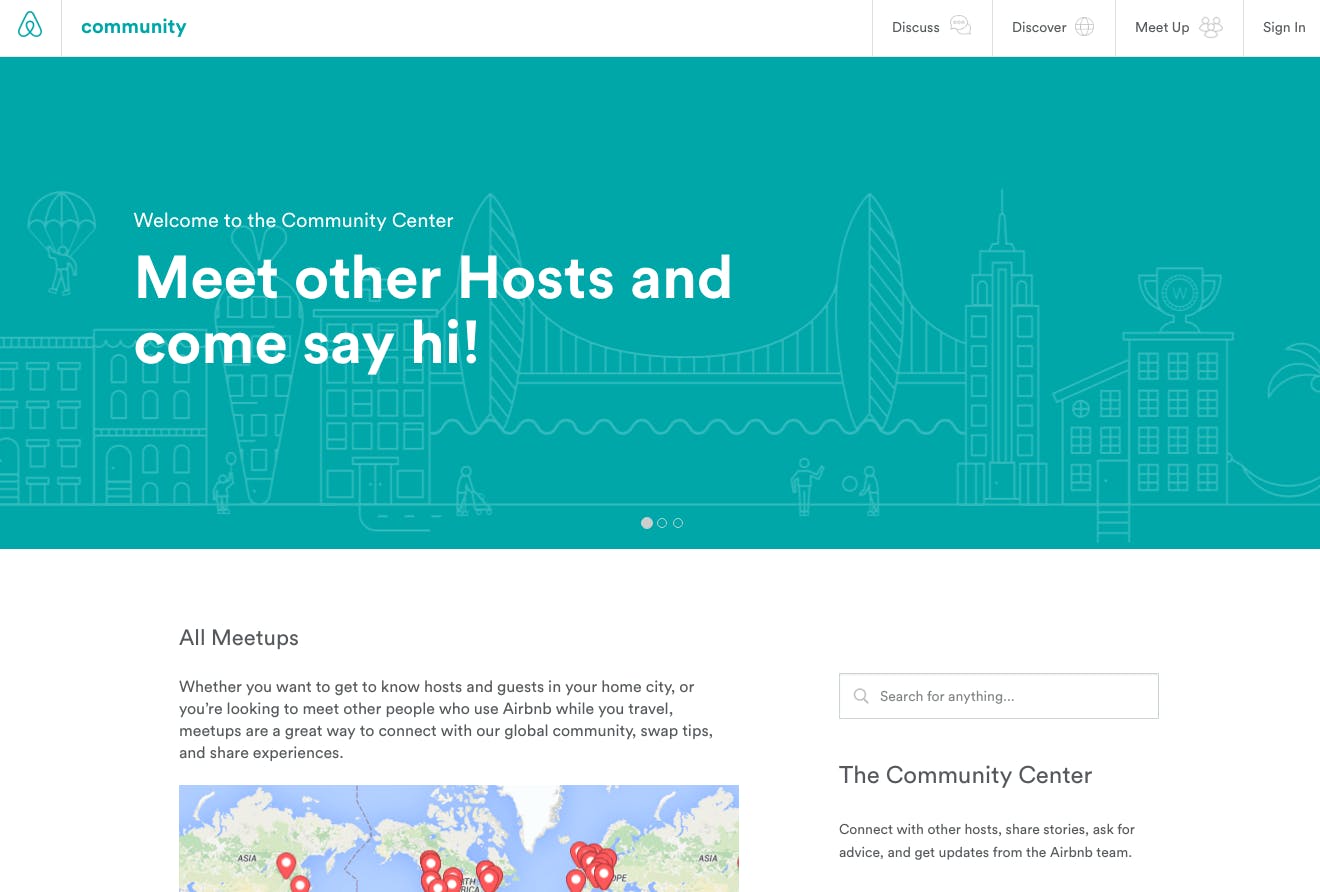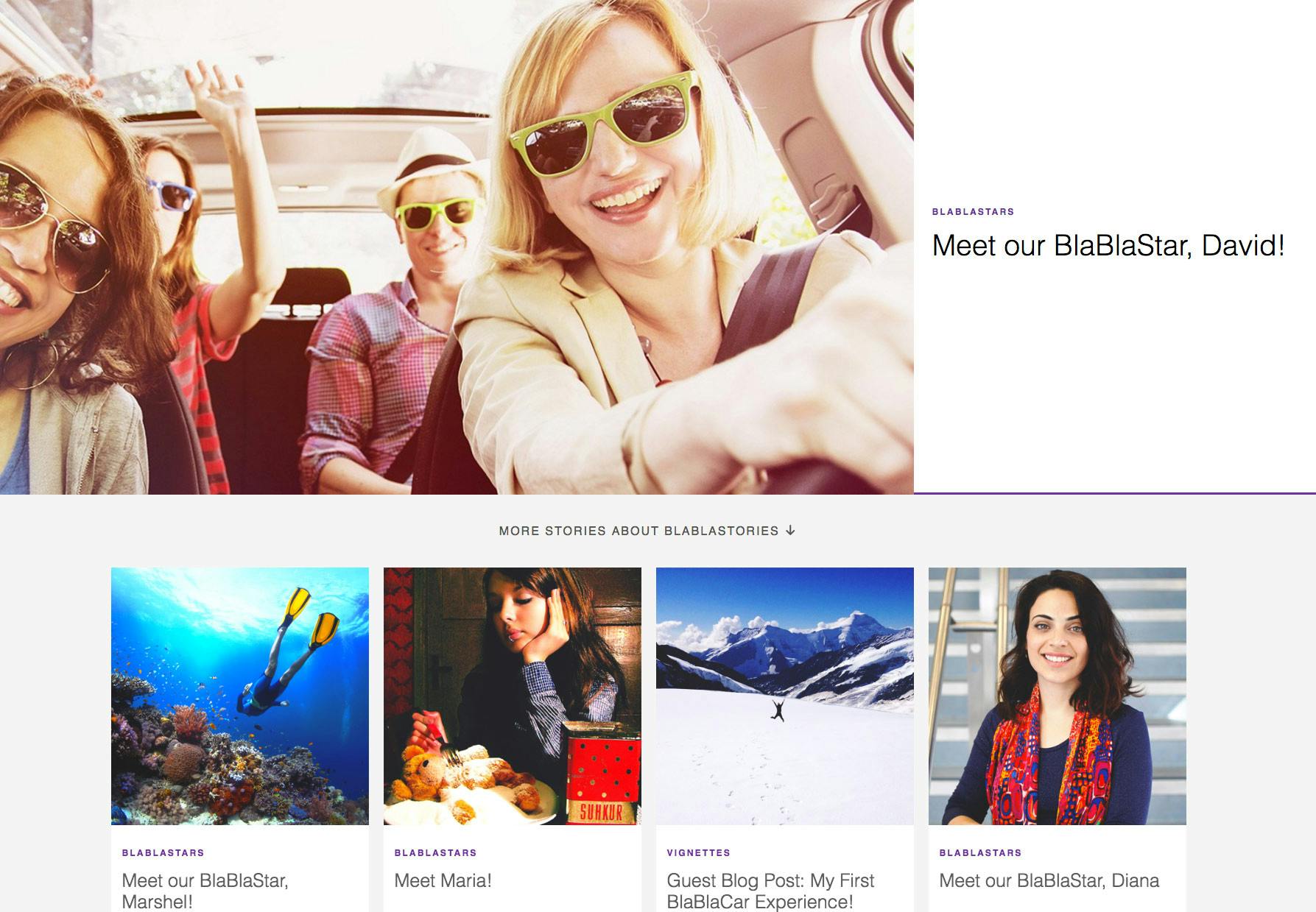How to turn your marketplace into a community
Engage your best providers by turning them from users into community members.
Published on
Last updated on

The final chapter of our How to create a marketplace guide introduces a strategy marketplaces use to create a sustainable competitive advantage: community-building. Also available as a podcast!
As we have learned in the earlier chapters of the Practical guide for building a marketplace, the purpose of any marketplace is to facilitate transactions between users.
To do that, you need to have users who are engaged and committed to your platform. A popular way to achieve this is to turn your platform into something more than a marketplace: a community. This strategy has been used by the most popular marketplaces, such as Airbnb and Etsy. PaulCamper, a Germany-based marketplace for renting camper vans, used community-building tactics to grow their supply almost five-fold.
You will now learn how to do the same.
Before we dive deeper into the strategies for building communities, we need to ask, "Why?". What are the tangible benefits that an engaged community of users can provide a marketplace business?
Let's start by defining what we mean by the word "community" in the context of a marketplace. Wikipedia defines a community as a group of people who share something in common, such as norms, values, or identity. Essentially, building a community around your marketplace means making your users feel that the marketplace is a part of their identity.
An Airbnb user is a person who allows strangers into their home and stays in strangers' homes when traveling. An Etsy seller is a person who makes a living as a maker and quite likely buys what she needs from other makers. For PaulCamper's providers, camper travel is a lifestyle. In all three examples, the marketplace value proposition taps into behavior that is essential for the user's identity.
There are several reasons why it is important to get people to identify with your marketplace. Let's go through them.
Getting a new customer requires a lot more work than engaging an old one. To measure your marketplace's success, you should aim for a high repeat purchase ratio, thus increasing customer lifetime value. If your users feel the marketplace is part of their identity, they will keep coming back, and they will buy more.
Etsy is a great example of this. Etsy defines itself as follows: "We're more than a marketplace: we're a community of artists, creators, collectors, thinkers and doers." Their emphasis on the community is quite likely a key reason why their customers keep coming back; in 2015, 81% of Etsy's sales came from repeat purchases.
Engaged users are loyal. When they feel they belong to a community, they are less likely to jump ship, even when a competitor tries to entice them with lower prices or other perks.
The lack of trust between customers and providers is a big challenge for many marketplaces. If your users feel they share the same values and norms, it will increase the trust between them. And if they trust each other more, they will engage in transactions with each other more often.
Building marketplace trust on their marketplace through community-building has been important for EatWith, an "Airbnb for home-cooked meals". I interviewed Joel Serra, EatWith's Head of Launch, and he told me about their early days:
– We could have easily had ten or twenty thousand chefs in a few months because there were so many people looking to become chefs. However, we decided to grow slowly and get to know our community on a personal basis. We wanted to have a really personal relationship with everyone in our community to create a basic level of trust. Knowing every host around the world, whether it's through a conversation over Skype or through going to their event, creates the level of trust that a lot of platforms in this space simply don't have.
This slow, community-focused strategy helped EatWith raise $8 million in funding and become a leader in their extremely crowded space.
Community-building can be an important source of growth for a marketplace. You want to reach a virtuous cycle where high-quality providers bring in more customers and vice versa.
As collaborative economy specialist Rachel Botsman has put it:
– How does it make you feel? is a question I commonly ask when I meet hosts on Airbnb, drivers on Lyft, or Taskrunners on Taskrabbit to try to understand the role this rising breed of companies in the collaborative economy plays in people's lives. What I have noticed is that I often don't get a simple answer, but they tell me a story, their story of why they are doing what they are doing. And embedded in these tales is a cult-like sentiment that could rival Apple devotees, Harley Davidson fanatics, or Star Trek groupies.
These three successful companies have spent very little on traditional advertising and have relatively small marketing teams compared to established brands. Instead, they spend lots of resources on community-building. As a result, they have turned their most engaged users into ambassadors, who constantly spread the positive word about their brand. The same dynamic has significantly boosted PaulCamper's growth and also helped them tackle their initial chicken-or-egg problem.
Building a marketplace business is a continuous learning process. Feedback from your users plays a crucial part in understanding their biggest needs.
If your users are more engaged, they care more about your product, which also means they will give more feedback. When something is not working, they will complain about it right away, very vocally. This is great. When people give you angry feedback, it's a sign that they care. This feedback is, by far, the best way to help prioritize what to work on next. If you are not getting any feedback, it likely means you are not solving a problem for your users, and they are not engaged. It is an indicator that something needs to be changed drastically.
As you can see, building a community has plenty of benefits. So how do you actually go about doing it?
Since marketplaces are two-sided beasts, you first want to understand which side to focus on. In some cases, it might make sense to involve all your users in the same community, especially if they act as both a customer and a provider. This is the approach ridesharing marketplace BlaBlaCar took: they highlight stories of both drivers and passengers on the same page.
The current trend, however, seems to be to focus on a marketplace's most valuable user group: the providers. For instance, Airbnb's community center is clearly targeted at hosts, even though some of their meetups are open to guests as well. PaulCamper, Etsy, Uber, and Thumbtack use a similar strategy, focusing their community efforts on sellers, drivers, and pros, respectively.

There are several different approaches to building a community. What works best for you depends on the stage and type of your marketplace. We will now review the most common strategies.
The first step in building a community is to think about what you stand for. What is the purpose of your marketplace business? What change do you want to see in the world? If you want your users to identify with your marketplace, they need to identify with this mission. My recommendation is to think about your mission from the very beginning, way before you launch your platform or even start talking to your users. Clarifying your mission—both internally and externally—will help you identify the people who relate to that mission.
Airbnb has put a lot of effort into understanding their essence. As Airbnb founder and CEO Brian Chesky puts it:
– For so long, people thought Airbnb was about renting houses. But really, we're about home. You see, a house is just a space, but a home is where you belong. And what makes this global community so special is that for the very first time, you can belong anywhere. That is the idea at the core of our company: belonging.
This is an idea that resonates with many travelers: your home is where you lay your hat.
Etsy, meanwhile, stands for handmade items. In 2007, Etsy—along with partners—released a Buy Handmade manifesto and urged people to pledge to buy more handmade since it is better for the people and the planet. Naturally, this is a message that resonates with crafters.
Remember: when you stand for something, it usually means you also stand against something else. Airbnb stands against impersonal hotel experiences. Etsy has traditionally stood against mass production. Do not try to have a mission that resonates with everyone. The result will be a bland statement that nobody really identifies with. Instead, be bold, and be prepared to make some enemies along the way.
Once you have clarified your mission, you need to stay true to it, or you will be alienating your community. Etsy recently embraced mass production to reap more profits. The move caused many original sellers to abandon the site and damaged Etsy's reputation.
Instead of building a community from scratch, see if a community already exists around your cause. As Facebook founder Mark Zuckerberg said when he was asked about how to build an online community:
– Communities already exist. Instead, think about how you can help that community do what it wants to do.
Etsy was born out of a need of an existing community. As one of the co-founders, Chris Maguire, explains, the founders were running a freelance web design shop before Etsy. One of their projects was a redesign of an online forum for crafters, GetCrafty. The founders became active members of the forum and soon realized many of the forum members wanted a place to sell their creations online. They went on to build such a solution. While building it, they discovered an even bigger forum, Craftster.org. They contacted the founder and suddenly had a huge audience.
While you want to think about your mission before you have any users, it is good to keep in mind that ultimately it is the users, not you, who define your community. Thus, it is important to get to know them early own—to understand their needs and learn how to talk to them.
Brian Chesky was homeless for months, living with one Airbnb host to another. He wanted to know everything about the service and its users. He received important feedback and also built relationships with their early adopters.
The EatWith team hosted dinners themselves or participated as attendees in other dinners. They did this to get to meet the customers in real life, better understand the EatWith experience, and keep learning about their service.
Once you have found the people that identify with your mission, you need to help them communicate with each other. You should offer some kind of communication platform that lets people interact freely without the need to engage in a transaction. This helps them realize that instead of being alone, they are surrounded by like-minded individuals who identify with the same mission.
Most popular marketplaces—like Airbnb, eBay, Etsy, and Uber—offer community forums where their users can interact with each other. Starting with a more lightweight approach can be enough; perhaps a Facebook group, or even just a hashtag on Twitter or Instagram.
During your forum's early days, you will face the same problem as with your marketplace: it is empty and needs a critical mass of users to function properly. Just like you need to seed your marketplace, you also need to seed your online community.
One way to seed content is to start discussion threads yourself. A great way to get people to talk is by asking them questions. People love to talk about themselves. Create an introduction thread where every new provider can tell a bit about themselves and why they joined. This not only helps seed the community but also helps people trust each other as they hear each others' stories and realize there's another human being behind that avatar.
Seeding also helps set the tone of the community. Others will follow the example of the early adopters. When popular online community site Reddit got started, its founders went rather far with this strategy: they created lots of fake accounts and had conversations with each other just to showcase what a civilized conversation on Reddit could look like.
When your users start creating their own threads on the forum, make sure every thread gets a response. People want their voices to be heard.
When new people join your community, they want to learn what the community is like. Sharing the stories of your users helps them familiarize themselves with existing members. BlaBlaCar, for example, invests heavily in showcasing users' stories on their BlaBlaStories site. Thumbtack also highlights stories from their successful professionals. Studiotime does the same through their Instagram account.

Obviously, these stories communicate the benefits of the marketplace, but they also have another purpose: by reading a few stories, you get a basic understanding of the kind of people who belong to the community. More importantly, you can also decide whether they are the kind of people you would feel comfortable hanging out with.
When your marketplace grows, you will notice certain users who bring in a lot more sales than everyone else. These people are your power users. Consider offering them special perks and advantages.
Airbnb has a SuperHost program that rewards hosts who offer excellent customer experiences. SuperHosts receive travel coupons, priority support, and other similar perks. eBay has a PowerSeller program that rewards qualified sellers for reaching specific goals around sales volume, feedback, policy compliance, and account standing.
Similar to how you want to highlight certain members of the community, you also want to weed out the bad apples and remove inappropriate content. On active forums, content moderation can be quite a time-consuming task as you need to go over lots of content every day. This means you should only open a forum once you know you have enough time to maintain and curate it.
According to Nish Nadaraja, the creator of the review site Yelp's Elite program, when building a community, one of the first things to figure out is a mechanism for conflict resolution. Conflicts are inevitable. It is a good idea to set clear ground rules and provide an example by being active in the community yourself.
Note: do not confuse moderation with censorship. While you want to remove users that are aggressive or malicious towards other users, you should not remove users or content that criticizes your platform or customer service. Doing that will backfire. That type of action will not go unnoticed, and users will interpret it as an attempt to silence valid criticism. A better way to respond is by addressing the critique politely but firmly and explaining your position.
In some cases, it is not enough to build the community online. Interacting with people in real life can be a much more effective method to engage them. Rebecca Rosenfelt, Product Manager at Airbnb Portland, explains how Airbnb uses guerrilla tactics whenever they need to build a community in new regions. They build teams of two or three people and send them to talk to locals, host info sessions, distribute flyers, and set up booths at local events. She says the CAC (Customer Acquisition Cost) for this strategy (physical presence) is one-fifth the cost as with Facebook ads. Additionally, the markets where Airbnb had a physical presence kept growing twice as fast as their other markets.
Lyft created the role of ambassador to give users the opportunity to promote Lyft in their city in exchange for cash. Ambassadors can earn $10 per passenger referral and up to $750 for each referred driver.
To learn more about building street teams on a low budget, I recommend watching this interview with Sonny Mayugba, the founder of the restaurant marketplace Requested. They grew using street teams of students that spend 90-day internships with the Requested team.
When your community grows, you can move from piggybacking on others' events to hosting your own. Local events are a great way to get a big group of your users to the same physical location at the same time. The people who attend such events are quite likely very potential power users.
Airbnb organizes meetups to help hosts (and guests) meet each other and learn about topics related to the service. Airbnb also organizes launch parties whenever they open in new countries and cities. BlaBlaCar hosts BlaBlaCar drinks and BlaBlaCar tours around different regions to raise awareness about the brand and build a community. Face-to-face meetings and get-togethers are central in PaulCamper's community-building strategy as well.
When EatWith launched in Barcelona, I, together with others in the OuiShare Barcelona team, helped them organize a "fighting tapas" event with eight of their hosts. The event was a great success, and more than 120 people attended.
As we have done in previous chapters, it is time to apply—one last time—the learnings from this article to your imaginary personal trainer marketplace.
You start by defining your mission. Since your marketplace deals with health and fitness, you decide to go with fitness is for everyone. You reason that when the barrier to start exercising is low enough, more people will start exercising, which results in improved overall health and life expectancy. This resonates with people who are interested in getting healthier but have so far been unable to get off the couch. It also resonates with your trainers, since it promises more customers for them.
Since your customers and providers are two separate groups—personal trainers rarely use the services of other personal trainers—you decide to focus your community-building efforts on your most valuable users: the trainers. Being a freelance personal trainer is often a lonely job, so you figure they could benefit immensely from being a part of a trainer community.
In a previous chapter on building marketplace supply, you decided to get your early adopter providers by tapping into existing communities: local gyms. You decide to book personal training sessions yourself with your 50 first providers, simply to get to know them and learn how they operate.
You then set up an invite-only Facebook group and invite all your providers. You make the group secret to create a feeling of exclusivity. In the group, you ask each trainer to introduce themselves and ask them to share their best customer service tips. You continue initiating discussions in the group about topics that interest the trainers and create polls to let them easily share their opinions.
In your blog, you start highlighting the stories of your top providers. You interview them and create long, detailed articles about their backgrounds and why they are doing what they do. You also feature the best of these articles on the landing page of your marketplace.
You also start a local meetup group to let the trainers meet each other and exchange tips in person. When you launch in new cities, you set up similar groups in each city.
As your marketplace grows, you create a "trainer hero" program to celebrate trainers with the most bookings and best reviews. You offer them fee discounts and throw exclusive parties only for them.
In this final chapter of the Practical guide for building an online marketplace business, you have learned why it is beneficial to turn your marketplace into a community. Engaged community members buy more, trust each other more, help you grow by spreading the word, and provide valuable feedback that helps you improve your offering.
To build a community, you should start by defining your mission: what do you stand for? You then need to decide whether to focus your community-building efforts on all of your users or focus only on your customers or providers.
Community-building strategies include tapping into existing communities, getting to know your early members, allowing people to communicate with each other, facilitating conversations, highlighting the stories of your users, celebrating power users, curating the community, creating street teams, and participating in and organizing local events.
We have now come to the end of our Practical guide. If you have not yet read the previous chapters, I encourage you to check them out. Reading them will equip you with the knowledge of how to create a successful online marketplace. However, we have only scratched the surface of many topics and go into deeper details in many more Marketplace Academy articles. Be sure to subscribe to the mailing list to be notified of new articles.
If you are still thinking about whether or not to start your own marketplace business, now is a great time to do it! Sharetribe's marketplace builder lets you have your marketplace running in minutes. You can use this guide at each step to help you along the way.
I wish you the best of luck in building your marketplace business!
You might also like...

Focus your marketplace on one city and one vertical
Tackle the chicken-or-egg problem with an extreme focus.

How to launch your marketplace
Strategies that bring demand to your freshly opened marketplace platform.

Marketplace leakage: How to discourage people from going around your payment system
How to solve the most daunting challenge of the marketplace business model: platform leakage.
Start your 14-day free trial
Create a marketplace today!
- Launch quickly, without coding
- Extend infinitely
- Scale to any size
No credit card required
